The most common infection that affects nearly 90% of people on Earth is called HPV or human papillomavirus. When papilloma was discovered, no one raised the alarm because among people it was considered a common wart. Get rid of them only if they interfere or have cosmetic flaws. The disease is "human" and can only be transmitted from sick to healthy people: in daily life, by touch, through the reproductive system, and from mother to baby during childbirth. The disease can appear on the skin or mucous membranes in the form of warts, papillomas, or condyloma acuminatum. Let's find out what HPV is and how dangerous it is to humans?

What is HPV?
The virus is present in almost everyone. HPV bacteria are so small that they can enter the bloodstream through scrapes, scratches, and small cuts on the skin. It may not appear in any way throughout the life of the carrier, or it may continue to appear in all its glory. The incubation period can vary from weeks to years. The signal for action is a weakening of the immune system. If papillomas appear on the skin and mucous membranes, the body needs emergency treatment.
There are more than 70 types of human papillomaviruses, but several new strains are registered each year. Traditionally, all types of HPV infections can be divided into two groups.
Warts are viruses that cause warts to develop in the body.
- HPV types 1, 2, 3, and 4 cause plantar warts or corns;
- HPV types 3, 10, 28, 49 cause the appearance of flat warts;
- HPV type 27 forms "sarcomas";
- HPV: 5, 7, 10, 12, 14, 15, 17, 19-24, 26, 27, 29, 57 - Warts can also develop.
Papilloma - The virus that causes papilloma and wart formation.
- HPV 6. 11, 13, 16, 18, 31, 33, 31, 33, 58, 52, 39, 70, 30, 40, 42, 43, 51, 55, 57, 59, 61, 62, 64, 67-69
What are the dangers of HPV?
Why have doctors been raising the alarm and trying to educate the public about HPV disease for the past few years? Because the percentage of cancer patients diagnosed with the virus is seriously increasing. Not only women with uterine cancer are affected, but also men with tumors of the male reproductive organs. The number of elderly people suffering from skin cancer is also increasing.
Sure, some types of HPV don't affect a person's internal health, but they can be uncomfortable when they manifest in the form of growing papillomas and warts. They are classified as low carcinogenicity - the lowest risk of developing cancer. This formation is easily removed by folk methods or aesthetic medicine. But the virus itself has not been treated by any means and drugs. If a person is infected, he is a carrier of the virus for the rest of his life.
Other subspecies of papillomavirus infection belong to the high carcinogenicity group, ie they can affect the formation of malignant tumors in the body.
There are 3 types of carcinogenicity:
- Low cancer risk HPV: 6, 11, 40, 42, 43, 44, 54, 61, 70;
- HPV with intermediate tumor risk: 26, 31, 33, 35, 51, 52, 53, 58, 66;
- High-risk HPV: 16, 18, 36, 39, 45, 56, 59, 66, 68.
Diseases and types of HPV
Below we provide a list of papillomavirus types.
Lesions:
- Plantar warts (corns) 1, 2, 4
- Common warts 2, 4, 26, 27, 29, 57
- Flat warts 3, 10, 28, 49
- Wart Butcher 7
- Epidermal dysplasia verrucous 2, 3, 5, 8, 9, 10, 12, 14, 15, 17, 19, 20-25, 36, 37, 46, 47, 50
Mucosal damage of reproductive organs:
- Condyloma acuminatum 6, 11, 42-44, 54
- Epithelial lesions that do not invade other layers (intraepithelial lesions) may be precancerous62, 64, 67-70
- Cervical, vulvar, vaginal, anal and penile cancers 16, 18, 31, 33, 35, 39, 45, 51, 52, 54, 56, 66, 68
Nongenital mucosal lesions:
- Oral mucosal lesions (focal epithelial hyperplasia) 13, 32
- Recurrent airway papillomatosis 6, 11, 30
- Malignant tumors of the head, neck, lungs 2, 6, 11, 16, 18, 30
Types of viral skin lesions
Most types of HPV infections are asymptomatic. The external appearance of the disease is different, here are several types:
common wart
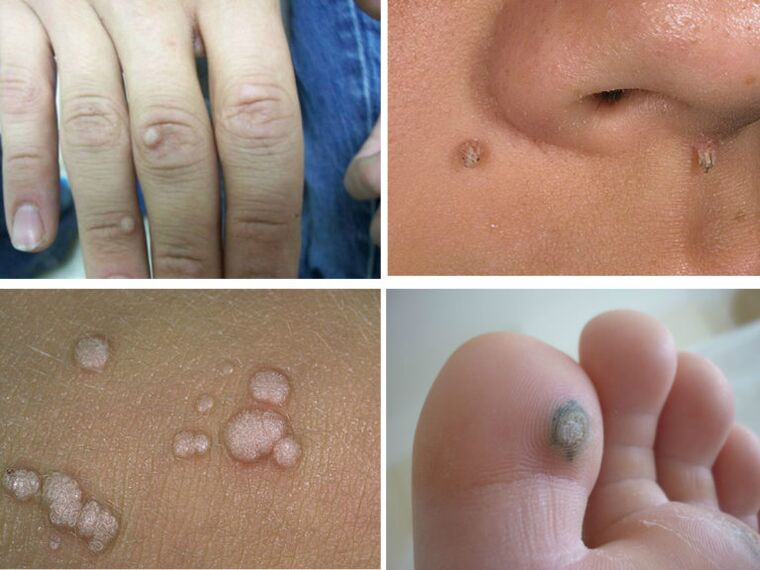
The most common form of HPV is warts. Almost everyone can find a similar pimple that does not exceed 5-7 mm in diameter on their body. Usually warts are located on the outside of the palms, between the fingers, on the soles of the feet, on the chin, on the eyelids, and on the scalp. Warts can grow in size or form colonies from maternal papules. Then they cause discomfort: itching and stinging at the growth site.
The most "ill" are plantar warts, their common name is "thorns". When walking, they put pressure on the nerve endings, causing severe pain. Surgical removal of such growths in the clinic is recommended. Simple warts pose no threat to human health, and they rarely develop into tumors.
Butcher's Wart
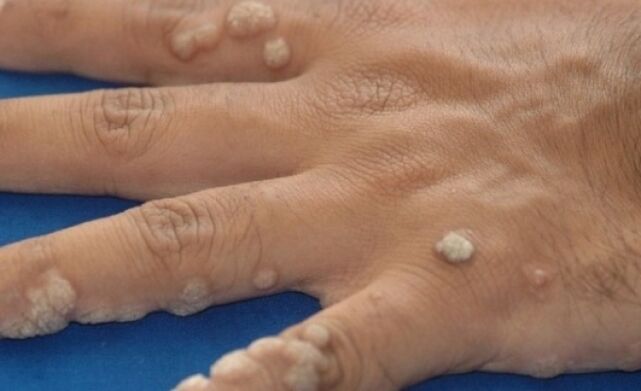
Butcher's warts look like multiple thick threads protruding from a single growth. Most commonly found on fingers, especially on cuts. Long filamentous papules are inconvenient to their owners, as these formations are not aesthetically pleasing. May bleed when bumped or scratched. While such warts are safe in an oncological sense, their damage can cause trouble. Doctor's advice is to remove it.
flat wart
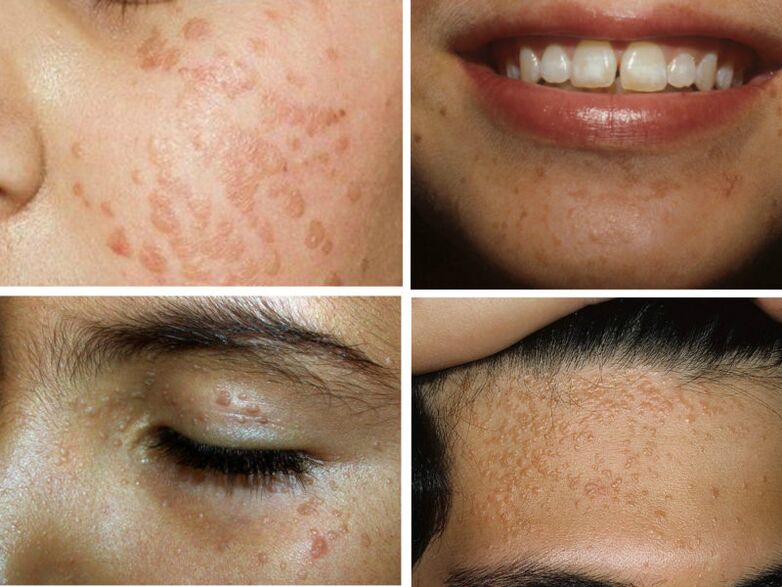
Flat warts are also called "pubertal warts" because they often appear during adolescence. They look like large dry rashes on the skin. Covers forehead, cheeks, chin, forearms. Color may be no different from skin or slightly darker.
Butcher's Wart

Butcher warts are scarred wart-like growths of normal skin color. They can be either single or clusters of multiple parts. The names of these wart growths are given by the professional activities of the butcher. It can be said that this infection is an occupational disease of the meat industry.
epidermal dysplasia verrucous

This disease can be confused with tinea versicolor, so you need to consult a specialist. It is hereditary, but very rare in the form of a skin disorder. On the surface, it looks like a buildup of flat, scaly rashes and age spots. The main target sites are the face, neck and hands. Unfortunately, this form of wart can develop into cancer.
periungual warts
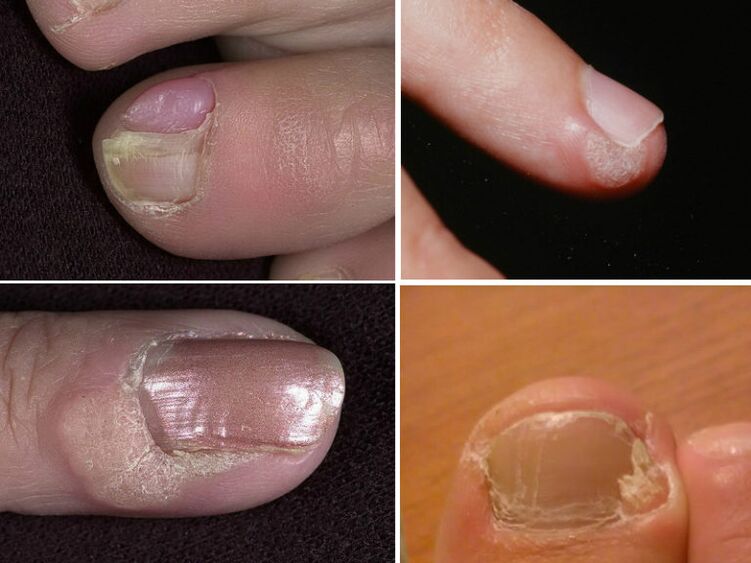
Warts located near the nails can damage the nail plate. They penetrate deep into the skin and deform the fingers. They don't develop into malignant forms, but that doesn't make them any less unpopular. Surgery is necessary for aesthetic reasons and the health of the fingers.
Bowen's disease
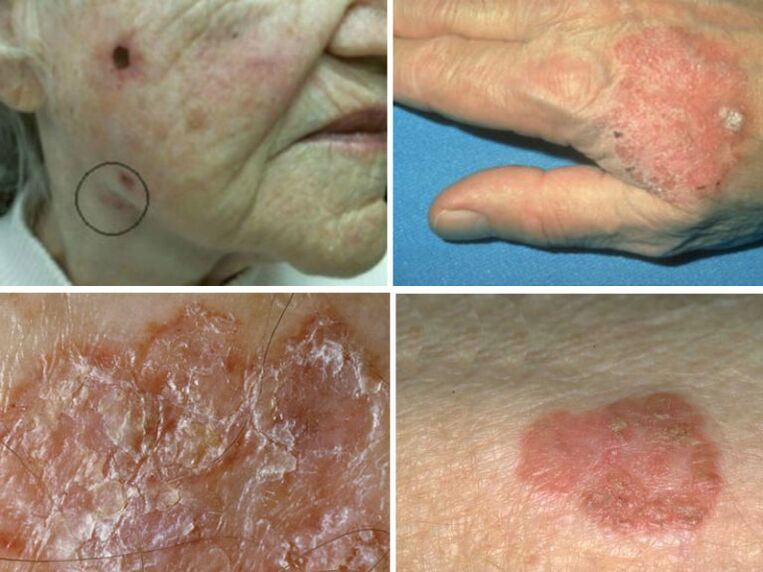
This form of HPV tends to degenerate into squamous cell carcinoma. When the skin is damaged, a 5mm red bump develops that grows and is covered by a scab. The upper layers of the epidermis are affected, growing up to 5 cm in diameter. It is more common in older adults because immune defenses are lowered.
condyloma acuminatum
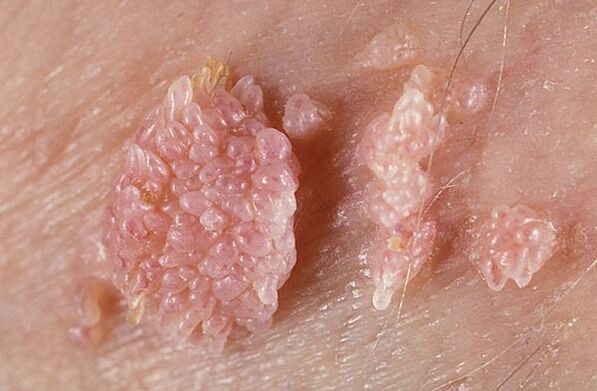
This type of HPV is sexually transmitted, so it affects the genitals of both men and women, as well as the mucous membranes of the urinary system and anus. The strata look similar to cauliflower or celosia. Genital warts may also appear on the corners of the mouth due to oral sex. The growths must be removed as they can be injured and cause infection during the rubbing process.
Oropharyngeal papilloma

HPV infection in the mouth is also similar to cauliflower. The white patches can descend into the lungs and windpipe, making it difficult to breathe. Eating may damage the papilloma, which can lead to cancer. Because it is impossible to differentiate between malignant and benign tumors, it is necessary to check before plaque removal.
Blooming papillomatosis doesn't just happen to older people. The disease occurs in children and adults. The main signs of laryngeal papillomatosis are dysphonia (speech disturbance) and aphonia (inability to speak), hoarseness, and difficulty breathing.
treatment method
There is no way to get rid of papillomavirus infection today. Therefore, treatment is reduced to removing external structures and suppressing the virus in the patient. In some cases, certain types of viruses die on their own in the body for years. Physicians determine methods and preparations for treatment based solely on the patient's diagnosis, tests, and external examinations.
Destruction method:
- Surgical excision (excision) of warts/papillomas (only if malignant lesions are suspected);
- Electrocoagulation - cauterizing the formation with a coagulator through which an electric current is passed;
- cryodestruction - destruction of warts with liquid nitrogen;
- Laser therapy - effects on laser beam formation;
- Radio Wave Method - Exposure to warts/papillomas using Surgitron device.
Chemical treatment:
- burn with salicylic acid;
- Processing and cultivating 50-90% concentration of trichloroacetic acid;
- Acid Mix - Treat with educational preparation (very inefficient).
In order to activate the immune system and suppress HPV, drugs with antiviral and immunomodulatory effects must be added to the treatment.
prevent disease
It is difficult to avoid getting the HPV virus because it can be acquired in the bathroom, swimming pool, while using common household items, in the hospital. But these strains are mild and do not cause cancer. Prevention often comes down to personal hygiene, the use of antimicrobials to treat cuts and injuries quickly, and the use of protective equipment while at work.
Special attention should be paid to preventing sexually transmitted viruses. Protecting your body with a condom is unlikely to be successful. A partner's viral infection may be located near the genitals and in the mouth. The best way to avoid infection is to get vaccinated beforehand. Girls and boys should be vaccinated before beginning sexual activity at age 11-13. Immunization lasts 3-5 to 10 years, depending on the type of vaccine and virus. Vaccinations can be repeated if there is a risk of infection (changing sexual partners).
HPV with high cancer risk can indeed cause tissue changes and lead to tumor processes. But it can take years between the first signs and the development of cancer. Therefore, it is very important to have an annual physical examination with your doctor, especially for women. Regular gynecological exams show changes in the external genitalia and cervix. Pay attention to your health!























